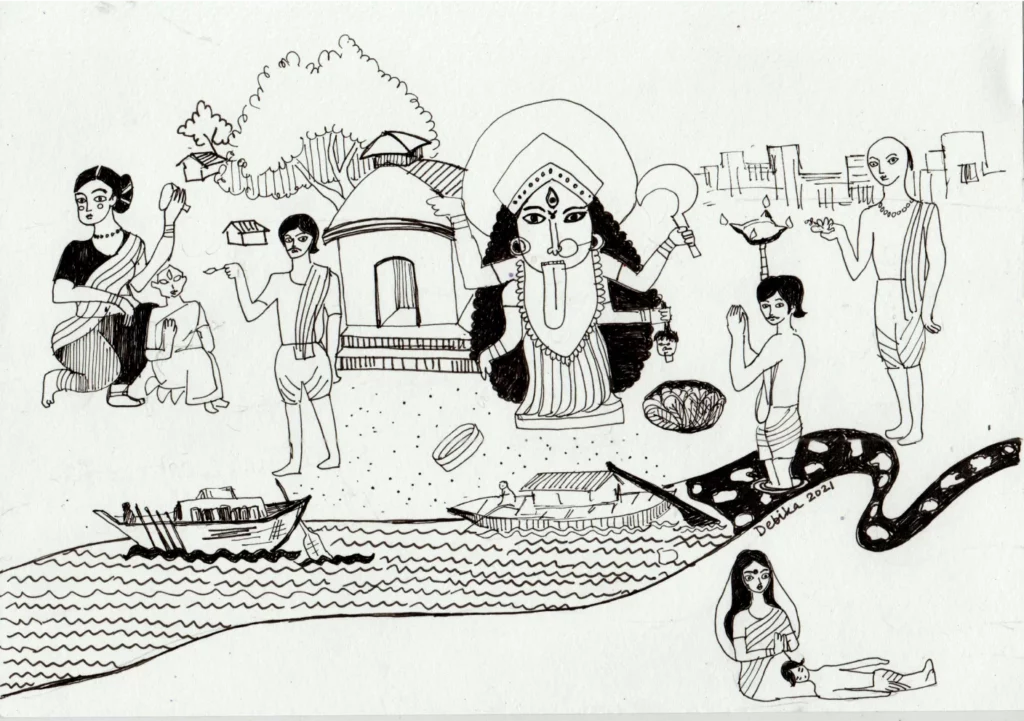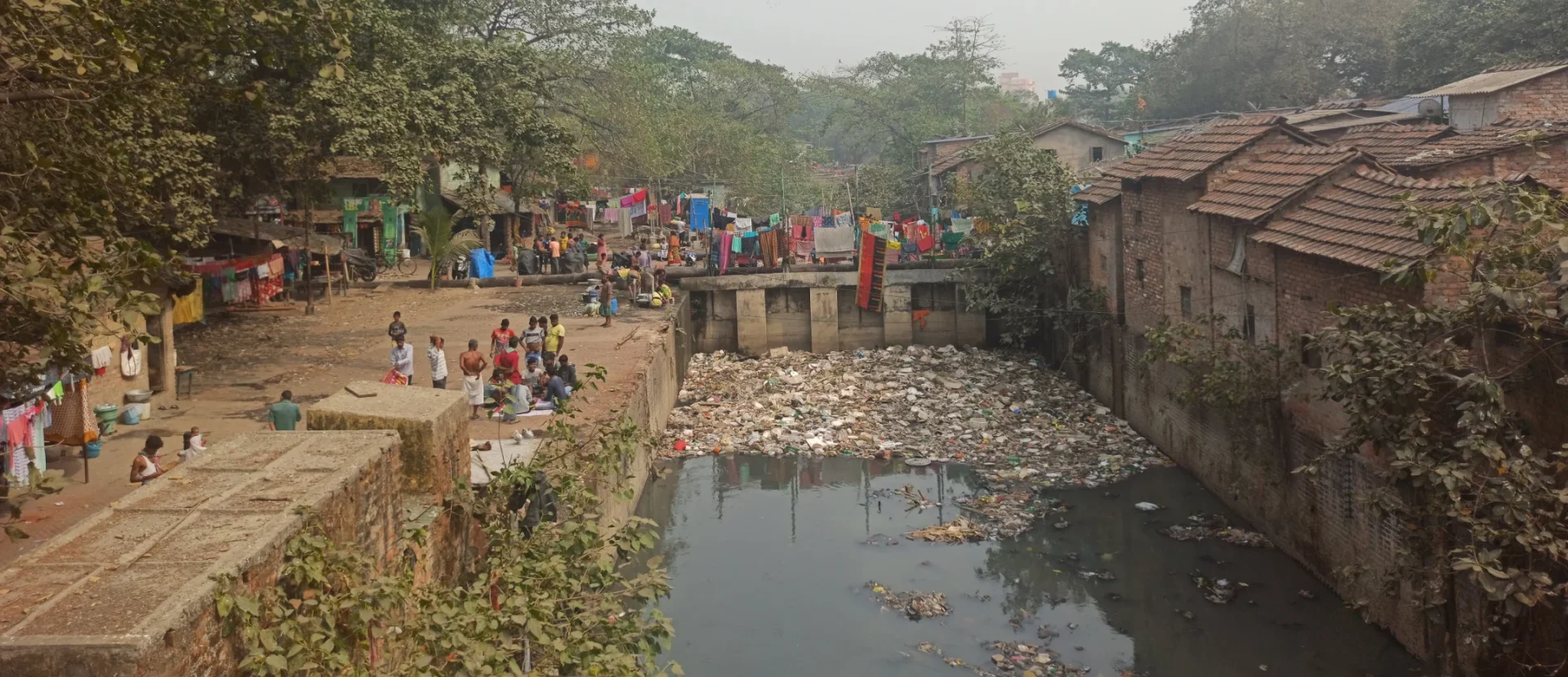Adi Ganga, a former channel of the River Hoogly flows across the southern visages of Kolkata towards the Bay of Bengal. Excavated in the 18th century by Major William Tolly of the East India Company for navigation and sewerage in the city, of Tolly’s Nullah. Despite having a center place during the medieval era, the river sprung back to popularity when Major William Tolly began the excavation of the canal during the 18th century. The Adi Ganga presently struggles under urban development and pollution, the case of most South Asian rivers at present. This narrative showcases the river’s evolution and transformation and the various socio-ecological assemblages on her banks, stating the need for the river’s rejuvenation.
The River through Time: How the Navigational Link Spins across the City
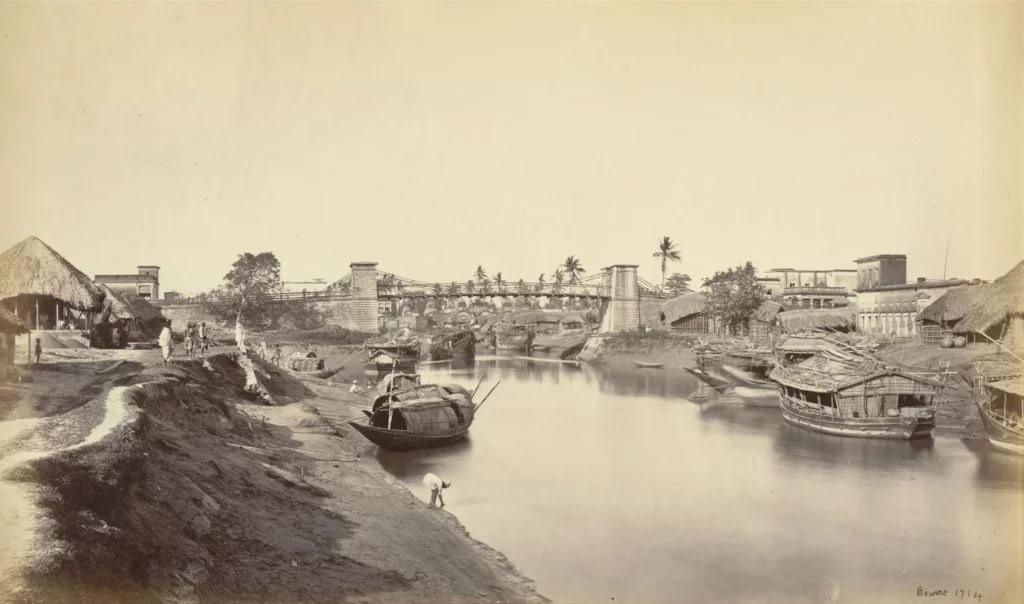
The river was the most important navigational route connecting then mainstream Calcutta. With William Tolly’s excavation of this old channel bed of the Ganges, the route was then linked with the Sundarbans for trade, leading to the increasing popularity of the river and growing settlements on her banks.
Beside being an important navigational stream in the budding metropolis, Adi Ganga was renowned as a holy river (in Hinduism) as well as a navigational channel. The medieval literature of Bengal talks of the river’s sacrality, with colonial accounts testifying the river’s reverence amongst citizens. The site of Kalighat, with the temple of the Goddess Kali built on the banks of the Adi Ganga is an important pilgrimage site for Hindus, illustrating the historical reverence attached to the river

Folklore and Rivers

The history of Adi Ganga can be found in various indigenous medieval scripts of Bengal, but it soon moved beyond the textual inscriptions to the corners of folk art in Bengal. The Patuas of Bengal, folk artisans excelling in the art of Patachitra or painting on a long scroll, have immortalized the heritage of the river by depicting various mythologies/stories of Hindu tradition such as Bipradas Piplai’s 15th century work Manasamangal Kavya, where the river was at the center of the story. In the story, Manasa (Goddess of snakes) wishing to be worshipped by the great merchant Chand Saudagar, fatally bites his son Lakhwinder to force his hand into the conflict. However, as Chand refused to concede to Manasa’s wishes, his recently widowed daughter in law Behula sets sail on the Gangaur with her husband’s corpse to reach heaven. The story then narrates the various protagonists’ voyages across the Adi Ganga to provide context to the river’s then socio-economic importance.
The Current Woes
Despite the heritage surrounding the river, Adi Ganga-Tolly Nullah couldn’t escape the burdens of urbanization. With the increasing importance of railways and roadways in the colonial and postcolonial era, the river route soon became less of a priority, with dwindling interest in her maintenance. This resulted in her present condition, with Adi Ganga becoming a filthy and polluted stretch and both the state and the people treating her as a mere garbage dumping site.
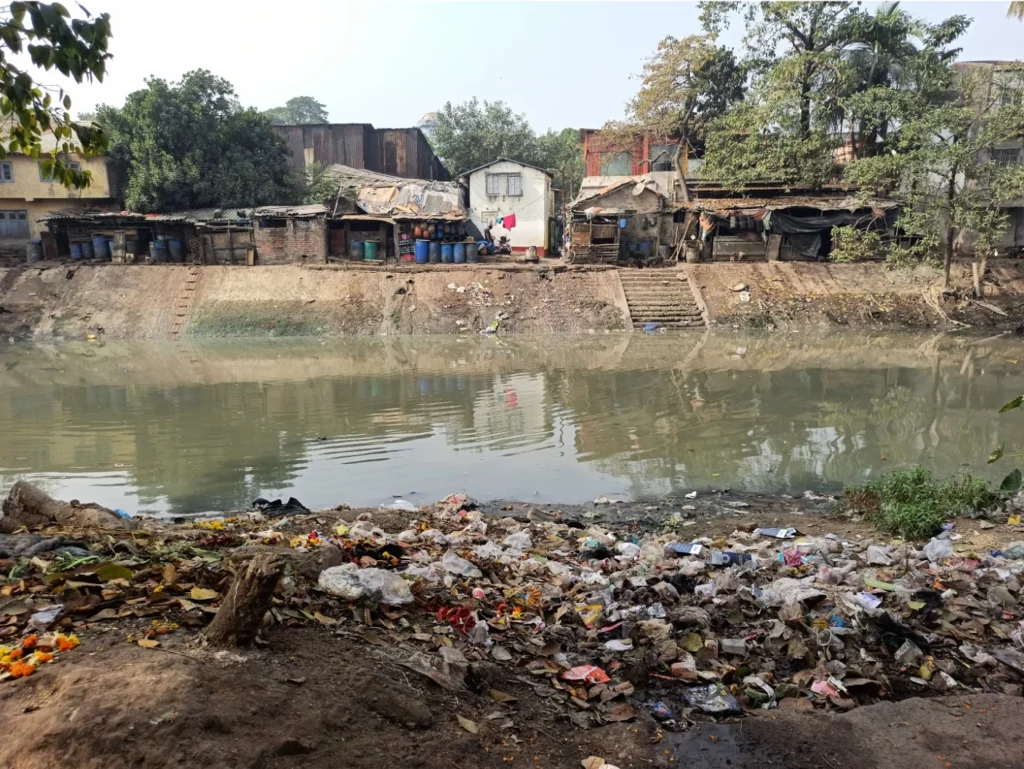
Pillared and Pillaged
Adi Ganga faced further struggles with the construction of the metro railway on sections of her length in the early 2000s. Despite the efforts of environmentalists and activists, the state and the judiciary sanctioned 300 pillars to be dug on the river’s stretch between Tollygunge and Garia. With this final intervention, Adi Ganga has been further degraded, reducing her to the likes of a mere sewer

The Forgotten River
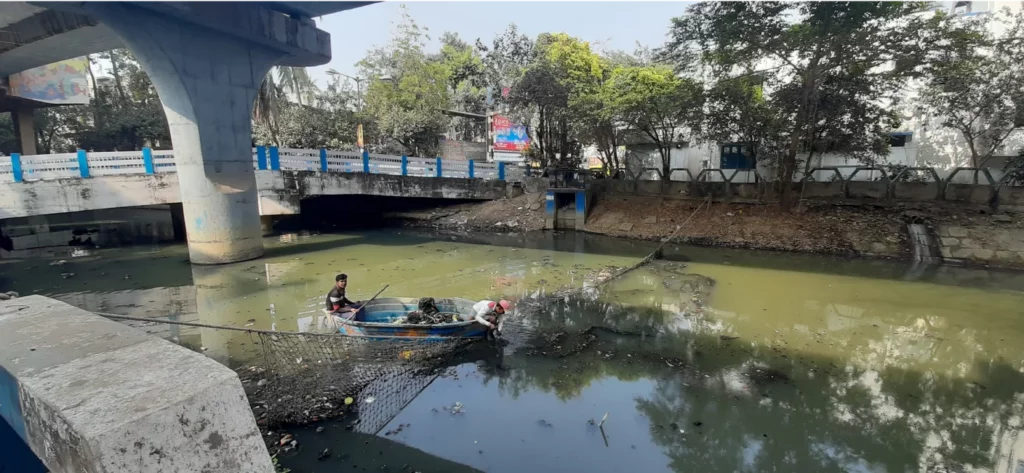
Adi Ganga-Tolly Nullah at present resembles a sewer, reeking of waste, refuse and abandonment. The Kolkata Municipal Corporation employs local youth to manually clean the river, by using nets and small boats to navigate and pick up inorganic waste. But it seems insignificant given the lack of awareness amongst the local residents who keep choking the channel by treating her as their backyard dumping ground.
The Relationships between the River and People
The river’s story is not only limited to her geomorphological state. The families living on her banks for centuries have witnessed her history and heritage as well. The river has changed and so has the life of the residents. Thousands of people, mostly from the underprivileged sections of society, who had taken refuge on her banks to escape political turmoil and find a livelihood in the city, have often been blamed for the river’s deteriorating situation.
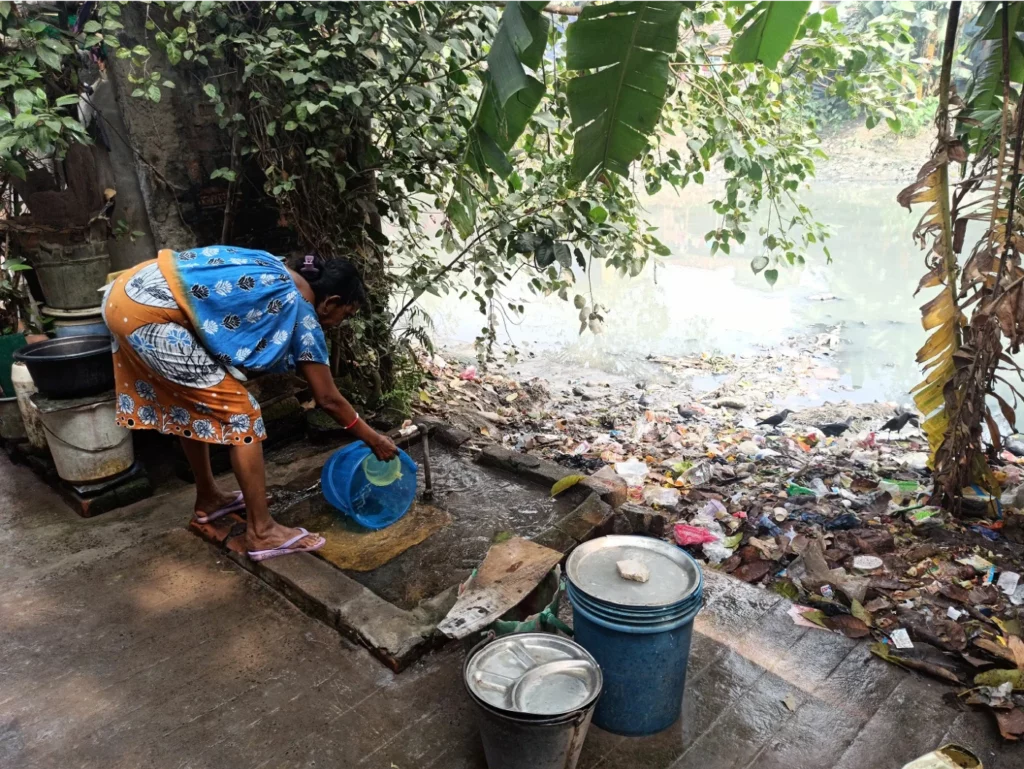
Stories Emerge from the River
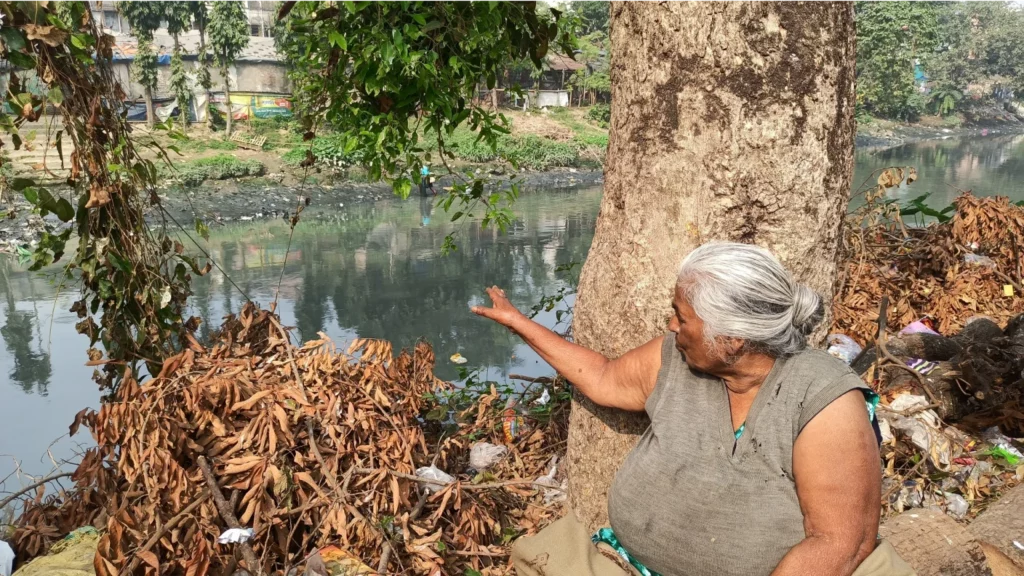
Despite brutal evictions of the squatters by the state especially during the metro construction days, many have returned over time to settle on the banks again. Residents, whose families have lived here for centuries, share the stories of Adi Ganga that have been passed on from generations, about the river’s magnanimity and subsequent decline.
River and its Sacredness
Despite the massive accumulation of filth and sewage, devotees continue to take their ritual dip in the polluted river as they believe she can purify their souls and cleanse them of their mortal sins. For them, the river’s heritage and reverence surpasses her contemporary challenges, and dirt is simply, ‘matter out of place.
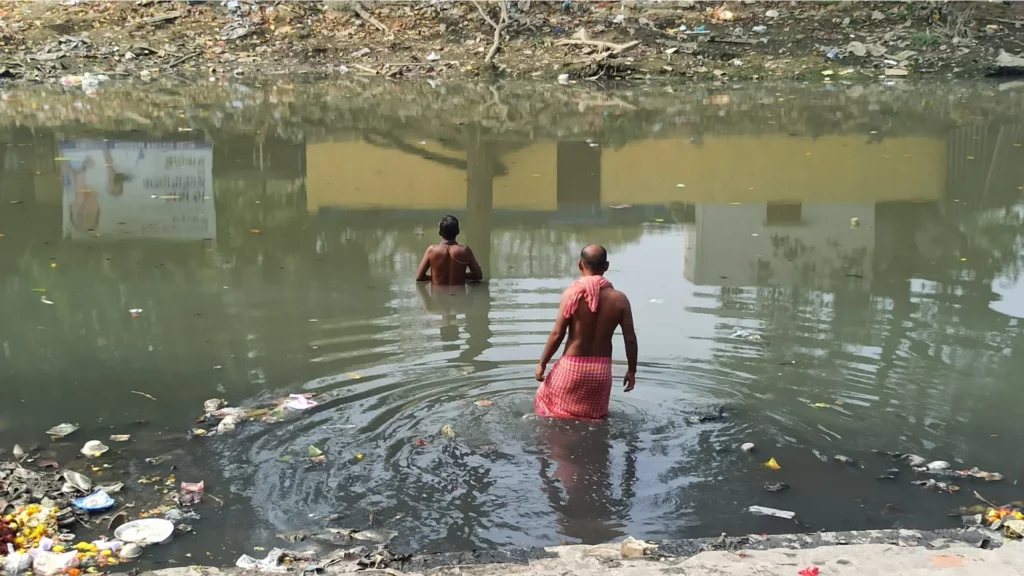
The Various Moods of the River
Life around the banks of Adi Ganga is not always gloomy. People from different sections of society who have been living here for decades, even centuries, have adapted their lives around this changing river. The elderly sit on the ghats (steps) and share cups of tea while watching the children play despite the foul odour and piles of filth.
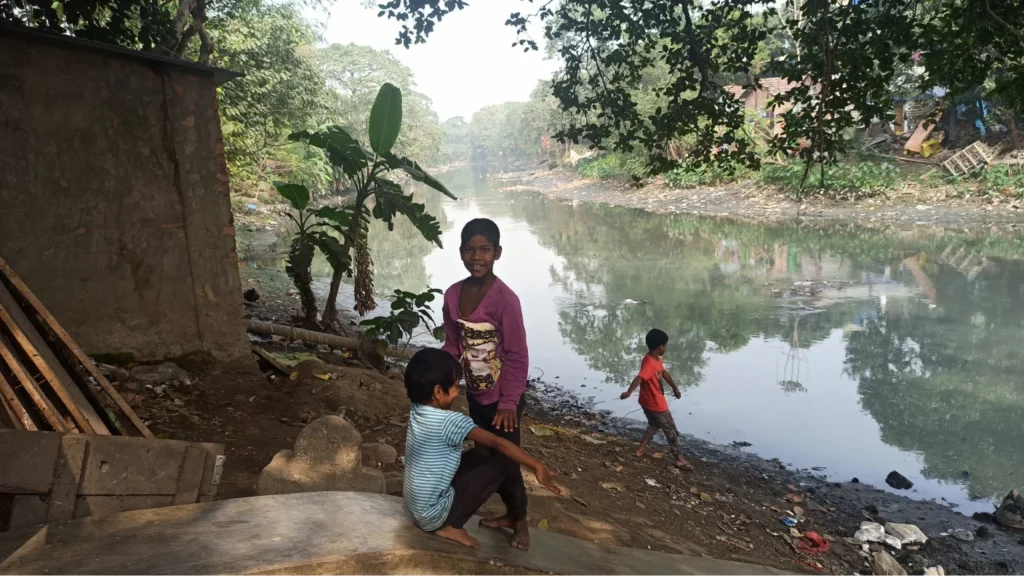

The river at the fringes of the city, with fewer urban interventions, almost springs back to life, as it travels towards the Bay of Bengal in a cleaner and healthier state. Although it is not possible to deurbanize the Adi Ganga, engagement and dialogue between local communities and the state can offer sustainable outcomes for the river and her residents’ future.
Visualizing the River
The multiple storylines on the banks of the Adi Ganga cannot be easily communicated through textual references. This sketch of the river therefore attempts to capture these diverse assemblages along the river across time. In this case the old river is drawn on the left hand side, which merges into the present condition of the river on the right. Adi Ganga, the mighty river that hosted ships navigating the lower Gangetic delta and numerous lives now stands choked under decades of pollution and negligence.
“আদি থেকে অন্ত” ( from the beginning to the end), the Adi Ganga has always played an important part in the city’s history. Even in its negligence it continues to flow like a phoenix.
